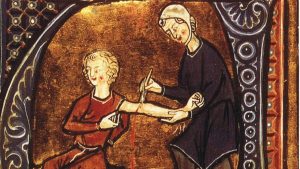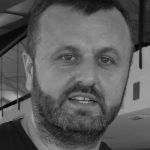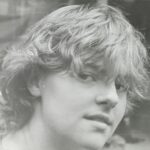Ko leči ljude? – omaž prof. Radanu Stojanoviću / Who treats people? – homage to prof. Radanu Stojanovic
 Ne želeći da govorim o pravom razlogu za ovaj članak,podsetiću se priče mog mentora prof. Radana Stojanovića, koji je nakon uspešne konferencije na Farmaceutskom fakultetu, koju je zatvorila moja školska drugarica prof. Branislava Miljković rečima da eto lekari dijagnostikuju, a farmaceuti leče, ustao nakon gromoglasnog aplauza i rekao da svako ko želi da leči može, lepo upiše Medicinski fakultet, završi, postane doktor i leči. I u tome jeste suština, bar je tako bilo poslednjih vekova, tačnije od Hipokrita. Ili možda nije. Javlja se sve više profesionalaca bliskih medicini koji misle da mogu da leče. Prvi su naravno farmaceuti, jer im je očigledno dosadilo da iza tezge dodaju lekove prepisane od strane lekara. Ono što ranije nije postajalo su over the counter lekovi, ili oni koji se ne dobijaju na recept. Sad ih ima toliko da ne postoji stanje ili bolest koju nije moguće tretirati lekovima za koje nije potreban recept. Međutim, sada kad im je pružena prilika, samo mali broj je iskoristio, jer naravno treba znati preporučiti lek. Često se igram u apoteci i zapitkujem i retko dobijem odmah odgovor. Hvala Bogu postoji Google ili neki medicinski pretraživač, pa se uvek dođe do nekog rešenja. Ipak, daleko od lečenja.
Ne želeći da govorim o pravom razlogu za ovaj članak,podsetiću se priče mog mentora prof. Radana Stojanovića, koji je nakon uspešne konferencije na Farmaceutskom fakultetu, koju je zatvorila moja školska drugarica prof. Branislava Miljković rečima da eto lekari dijagnostikuju, a farmaceuti leče, ustao nakon gromoglasnog aplauza i rekao da svako ko želi da leči može, lepo upiše Medicinski fakultet, završi, postane doktor i leči. I u tome jeste suština, bar je tako bilo poslednjih vekova, tačnije od Hipokrita. Ili možda nije. Javlja se sve više profesionalaca bliskih medicini koji misle da mogu da leče. Prvi su naravno farmaceuti, jer im je očigledno dosadilo da iza tezge dodaju lekove prepisane od strane lekara. Ono što ranije nije postajalo su over the counter lekovi, ili oni koji se ne dobijaju na recept. Sad ih ima toliko da ne postoji stanje ili bolest koju nije moguće tretirati lekovima za koje nije potreban recept. Međutim, sada kad im je pružena prilika, samo mali broj je iskoristio, jer naravno treba znati preporučiti lek. Često se igram u apoteci i zapitkujem i retko dobijem odmah odgovor. Hvala Bogu postoji Google ili neki medicinski pretraživač, pa se uvek dođe do nekog rešenja. Ipak, daleko od lečenja.
Druga profesija su DIF-ovci (Državni institut za fiskulturu) ili tačnije profesori fizičke kulture. Pošto njima predajem sportsku medicinu, mislio sam da mogu da pokušam da procenim odakle želja. Tačnije nisam uspeo, jer manje želje za učenjem nisam video, a više samopouzdanja. Ipak, neki od njih žive i rade u ovom gradu kao uspešni terapeuti. Iako to nije po zakonu, jer je dozvoljeno da samo ljudi koji završili medicinski fakultet mogu da leče druge ljude, oni leče gotovo sve, od gojaznosti, povreda, pa sve do degenerativnih oboljenja, za koje nema leka. Pri tom nema kontrole, samo para. Cifre su zastrašujuće, od nekoliko stotina do hiljadu ili desetina hiljada evra na godišnjem nivou. Rezultata uglavnom nema, tačnije onih kojih pokazuju da je nekom bolje, da mu je promenjen kvalitet života. Kako drugačije nazvati lečenje gojaznosti sa dijetom od 800 kalorija i fizičkom aktivnošću od nekoliko sati na tredmilu. Pa svako će da omršavi, ali kakve veze to ima sa zdravim stilom života, lečenjem ili zdravljem. Baš nikakve, ali ima veze sa 1500 evra. Ili šta reći za ishranu sa fensi nazivom koja kombinuje hranu na neuobičajen način, savetujući na primer da se ne meša pirinač i meso. Pa to je van svake pameti, jer da je tako jedan ceo kontinent bi umro od gladi.
Zašto je došlo do ovoga? Pa, pre svega jer medicina nije pratila promenu načina života ljudi i samim tim nije odgovorila na mnoga pitanja. Tako je ispalo normalno da je DIF koji se transformisao u sportske nauke, odgovorio na mnoga pitanja, novim masterima učenja, kao što su sportska ishrana (Sport Nutrition), fizologija vežbanja (Exercise philology), biomehanika (Biomechanics), fizikalna rehabilitacija (Physical Rehabilitation), prevencija i terapija (Health in prevention and therapy). Naravno kod nas to sporo ide pa samo retki pojedinci imaju uspeha. Sećam se da je na desetom jubilarnom kongresu Evropskog koledža sportskih nauka (2005) u Beogradu bilo samo nekoliko profesora sa DIF-a. Na moj poziv da dođu, tadašnji dekan, Prof. Kukolj rekao da tu nema šta da se nauči, iako je u tom trenutku bilo dvadeset dekana sa fakulteta za sport Zapadne Evrope u Beogradu.
U takvom ambijentu su napredovali i „kozmetičari” (farmaceuti). Davno beše pa verovatno ne kršim ugovor potpisan sa obaveštajnim odeljenjem Engleske antidoping agencije, koji su bili ljuti što njihovi fudbaleri dolaze da se leče kod „neke” Marijane u Beogradu. Pošto smo detaljno ispitali slučaj shvatili smo da je upotrebljena metoda elektroforeze u magnetnom polju na prerađenom uređaju. Naravno da je jednostavno, ali objašnjenje se nije dopalo Englezima, ponavljajući pitanje zašto se sportisti nisu javili timskom doktoru, već nekoj ženi u Beogradu. Da, zašto? Pa verovatno zato što nisu imali poverenja, ili zato što klasična medicina nije davala rezultate, ili prosto zato što su se nakon terapije u Beogradu osećali bolje i mogli da se vrate na teren.
Mnogo pitanja, malo pravih odgovora. Suština je očigledno u tome da se mnogo stvari promenilo i da većina fakulteta nije ni pokušala da razume promene i adaptira svoje programe učenja novim zahtevima. Dok se to ne desi, lekari neće znati da se snađu u mnogim situacijama, profesori fizičke kulture će lečiti ljude, farmaceutima će biti žao što nemaju značajniju ulogu, a po neki „kozmetičar” će se proslaviti.
♥
Without talking about the real reason for this article, I will remind about the story of my mentor prof. Radan Stojanovic, who, after a successful conference at the Faculty of Pharmacy, closed by my school friend, prof. Branislava Miljković, who said that the doctors diagnose and the pharmacists cure the people, stood up after the big applause and said, that anyone who wants to treat people could enrolled the Faculty of Medicine, finished it, became a doctor and cure peopel. And that is the point, at least it was the several centuries, more precisely from Hippocrates. Or maybe not. There are more and more prominent professionals who think they can cure. The first ones are, of course, pharmacists, because they obviously were bored to give drugs prescribed by the doctor from the counter. What previously did not exsist are “over the counter drugs”, or those that do need prescription. There are so many of them that there is no condition or disease that cannot be treated with them. However, now that they have been given an opportunity, only a small number pharmacists have used it, because, of course, it is necessary to be able to recommend a medication. I often play at the pharmacy and ask about drugs and I rarely get an immediate answer. Thank God there is Google or other browsers, so there’s always a solution. Still, far from treating the people.
Other professions are DIF’s guy (State institute of physical training) or professors of physical culture. Since I teach them sports medicine, I thought I could try to assess what they want. More precisely, I did not succeed, because I did not see less learning ability, and more self-confidence. However, some of them live and work in this city as successful therapists. Although this is not by law, because only people who have graduated from a medical faculty are allowed to treat other people, they cure almost everything, from obesity, injuries, to degenerative diseases, for which there is no drug. There is no control, only money. The figures are scary, from a few hundred to thousand or tens of thousands of euros annually. The results are largely missing, more precisely those who show that someone is better, that his quality of life has changed. How else to call a treatment of obesity with a diet of 800 calories and a physical activity of several hours on a treadmill. So everyone will let it go, but what does it do with life style or health. Nothing, except it has it with 1500 euros. Or what to say about a diet with a fancy name that combines food in an unusual way, advising, for example, not to mix of rice and meat. Well, that’s out of every mind, because that’s how one whole continent would die of hunger.
Why this came about? Above all because medicine did not follow the changes in people’s lifestyle and therefore did not answer many questions. So it turned out that the DIF that has transformed into sports science has answered many questions, new masters of learning, such as Sport Nutrition, Exercise philology, Biomechanics, Physical Rehabilitation, Prevention and Therapy. Of course, this is not happening in Serbia, so only rare individuals have success. I recall that at the tenth jubilee congress of the European College of Sports Science (2005) in Berlgrade there were only a few DIF professors. At my invitation to come, the dean, prof. Kukolj said that there was nothing to learn, although at that time there were twenty deans from the faculty of sports from Western Europe in Belgrade.
“Cosmeticians” (pharmacists) also developed in such an environment. It was long gone and I probably did not break the contract signed with the intelligence department of the English Anti-Doping Agency, who were angry that their players came to be treated by “some” Mariana in Belgrade. After examining the case in details, we realized that the method of electrophoresis in the magnetic field on the self manifactured device was used. Of course, simply, the explanation did not like the English, repeating the question why athletes did not contact team doctors, but a woman in Belgrade. Yes, why? Probably because they did not have confidence, or because classical medicine did not give results, or simply because they felt better after therapy in Belgrade and quick return to the field.
A lot of questions, few answers. The point is obviously that a lot of things have changed and that most faculties have not even tried to understand the changes and adapt their learning programs to new demands. Until this happens, doctors will not know how to handle in many situations, professors of physical culture will treat people, pharmacies will be sorry they do not have a significant role, and some cosmeticians will have success.


